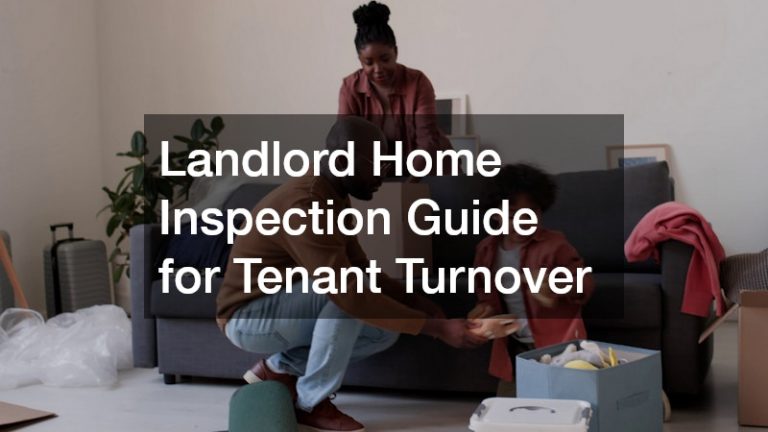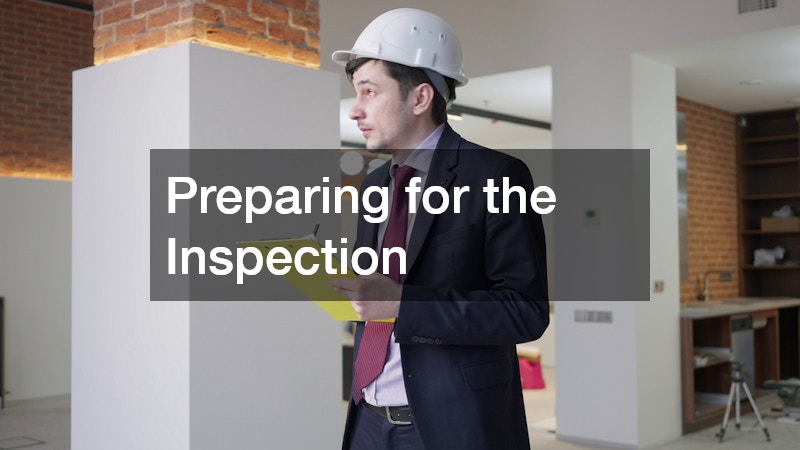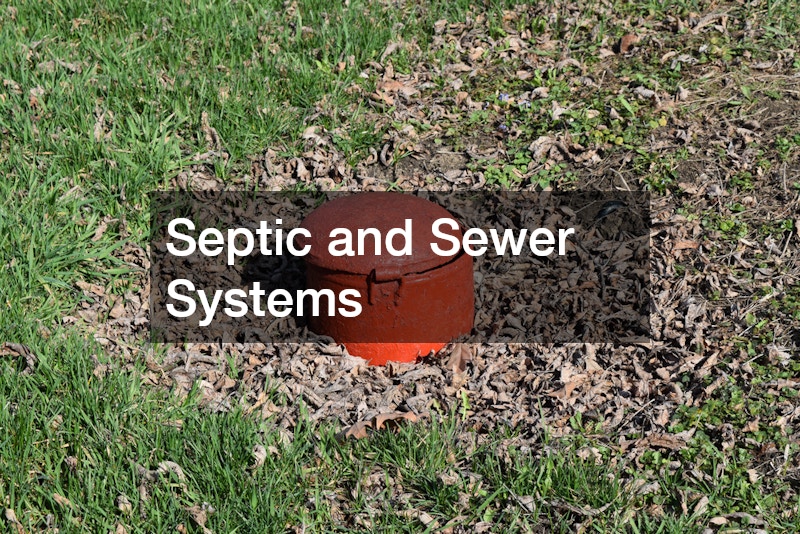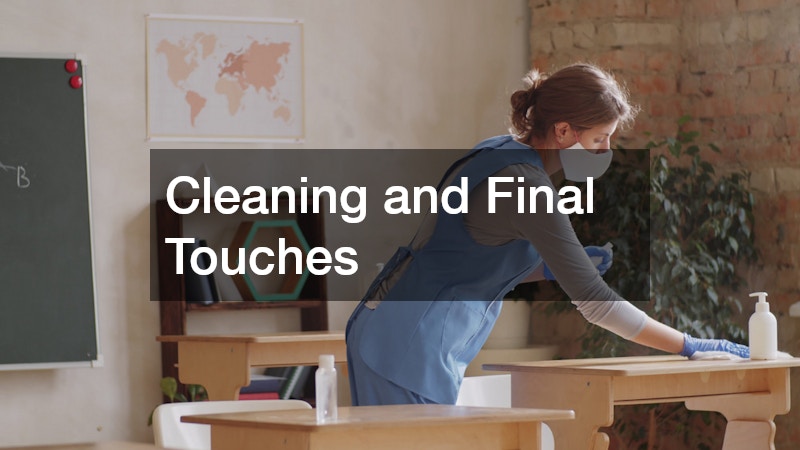For landlords, tenant turnover represents one of the most important opportunities to protect and maintain their rental property. When one tenant moves out and another is preparing to move in, ensuring the property is thoroughly inspected prevents costly repairs, reduces disputes, and increases tenant satisfaction. A systematic approach to inspections during turnover helps maintain property value, addresses safety concerns, and ensures that the home is move-in ready.
A comprehensive inspection is more than just a quick walk-through. It involves checking plumbing, electrical systems, HVAC units, structural elements, and interior and exterior surfaces. Skipping steps can lead to overlooked issues, which may worsen over time and impact future tenants. Taking a structured approach allows landlords to catch small problems before they become major, expensive repairs.
This guide provides detailed, actionable advice on performing a landlord home inspection between tenants, covering everything from utilities and safety to aesthetics and maintenance. By following these strategies, landlords can streamline tenant turnover, maintain a high standard for their properties, and provide a safe and comfortable environment for new occupants.
Preparing for the Inspection
Preparation is key to a successful inspection. Landlords should start by collecting all maintenance records, previous inspection reports, and repair receipts. Having a detailed record ensures recurring problems are identified and that no area is overlooked. Creating a checklist covering plumbing, HVAC, electrical, structural components, and interior and exterior surfaces ensures a methodical approach.
Scheduling is critical. Conducting the inspection immediately after the tenant moves out allows sufficient time for repairs, cleaning, and any necessary upgrades before new tenants arrive. Communicating with the outgoing tenant about the inspection process prevents misunderstandings and ensures access to all areas. This step also helps landlords assess any damage attributable to tenant behavior versus normal wear and tear.
During preparation, landlords should also consider safety and documentation. Wearing gloves, protective shoes, and masks protects against hazards. Using a camera or smartphone to document problem areas adds a layer of protection against disputes. A well-organized landlord home inspection ensures that all areas are evaluated systematically and efficiently, setting the stage for a smooth tenant turnover.
Plumbing and Drain Systems
Plumbing is one of the most critical aspects of any rental property. Leaks, dripping faucets, slow drains, and running toilets can cause major damage and inconvenience tenants. During a landlord home inspection, check all sinks, tubs, and toilets for leaks or corrosion. Examine under sinks and behind appliances, looking for signs of water damage, mold, or discoloration. Even minor leaks can lead to bigger problems if left unaddressed.
Drain systems also require attention. Run water through all sinks, tubs, and showers to check for clogs or slow drainage. Toilets should flush correctly without gurgling or overflowing. A persistent problem could indicate deeper issues in the pipes. In such cases, professional drain cleaning services are essential to restore full function and prevent future blockages. Scheduling these services between tenants ensures that water flow is optimized and reduces the risk of complaints from incoming occupants.
Additionally, landlords should inspect water heaters, including checking for rust, leaks, and proper pressure settings. Test all faucets for temperature consistency and proper pressure. Keeping detailed records of maintenance and repairs provides proof of diligence and can protect landlords in case of disputes. Performing a thorough landlord home inspection of plumbing systems ensures that tenants have a reliable water supply and helps avoid costly emergency repairs later.
Heating, Ventilation, and Air Conditioning (HVAC)
HVAC systems are essential for comfort, energy efficiency, and overall tenant satisfaction. During turnover, landlords should check that all heating and cooling units operate correctly. Replace air filters, inspect ductwork for leaks, and ensure vents are clean and unobstructed. Test the thermostat to confirm accurate temperature control, and listen for unusual noises or vibrations that could indicate mechanical problems.
Professional HVAC services are invaluable during tenant transitions. They can clean, service, and repair units, ensuring optimal performance. Regular maintenance prolongs equipment life, improves air quality, and prevents mid-lease breakdowns that could frustrate tenants. Documenting HVAC service visits also demonstrates that the property is well-maintained and safe.
Finally, consider energy efficiency upgrades where necessary. Sealing ducts, cleaning coils, and testing insulation can reduce energy costs and make the rental more appealing. By including HVAC assessment in a landlord home inspection, landlords safeguard both tenant comfort and property longevity while preventing costly emergency repairs.
Pest and Wildlife Prevention
Pests and wildlife can cause structural damage and create safety hazards. A thorough landlord home inspection includes checking for rodents, insects, and wildlife entry points. Inspect basements, attics, crawl spaces, and exterior walls for signs such as droppings, nests, gnaw marks, or unusual sounds. Entry points along rooflines, vents, and foundations should be sealed to prevent infestations.
Vegetation around the property should be trimmed to minimize hiding places for pests. Landscaping that touches the building or overgrown areas can attract wildlife like squirrels or raccoons. If signs of infestation are discovered, professional wildlife control services can remove animals safely and implement preventive strategies to reduce future risks.
Regular pest prevention not only protects the property but also ensures tenant satisfaction. Documenting inspections and remediation steps during your landlord home inspection helps prevent disputes and demonstrates proactive management. A pest-free property maintains structural integrity and keeps the rental attractive to prospective tenants.
Move-Out and Move-In Logistics
Proper coordination of tenant turnover logistics is essential. Conduct inspections as soon as the outgoing tenant vacates, allowing time to address repairs and cleaning. Check all areas for damage caused during moving, including floors, walls, and door frames. Document any issues to determine responsibility and protect security deposits.
Using a professional moving service can prevent accidental damage during the transfer of large or fragile items. Even if tenants handle their own move, providing guidance or recommended services protects the property. These services also help maintain schedules, reducing vacancy time between tenants.
A detailed landlord home inspection ensures the property is ready for new tenants. By assessing damage, coordinating repairs, and planning logistics carefully, landlords can streamline the turnover process, avoid costly errors, and maintain a professional reputation.
Interior Surfaces and Aesthetics
The condition of walls, ceilings, floors, and other interior surfaces affects tenant satisfaction and property value. During turnover, inspect for scratches, dents, cracks, water damage, and stains. Evaluate cabinetry, countertops, and bathrooms for wear and tear. Small issues, if addressed promptly, prevent more significant repairs later.
Professional interior electrostatic painting services are ideal for refreshing walls efficiently. This method provides even coverage and long-lasting durability, making units look new quickly. Electrostatic painting is especially useful in high-traffic rentals where frequent repainting is necessary.
Additionally, check the flooring, trim, doors, and window treatments. Carpets may need deep cleaning or replacement, and hardwood floors should be polished and repaired as needed. Incorporating interior maintenance into your landlord home inspection ensures the property is visually appealing and move-in ready for the next tenant.
Septic and Sewer Systems
Septic tanks and sewer lines require careful inspection during tenant turnover. Check for odors, slow drainage, and signs of overflow. Ground conditions around the septic system should be monitored for water pooling or erosion, which could indicate a malfunction.
Scheduling routine septic cleaning between tenants helps prevent blockages and ensures compliance with health standards. Regular pumping reduces the risk of backups and protects the property from costly damage. Maintaining a clean septic system is essential for the safety and satisfaction of future tenants.
Landlords should document inspections, repairs, and service visits. A thorough landlord home inspection of septic and sewer systems ensures the property is fully functional, safe, and ready for immediate occupancy.
Chimney, Roof, and Exterior Inspection
Exterior inspections protect the property’s structure and tenant safety. Examine roofs for missing or damaged shingles, check gutters for debris, and ensure flashing is intact. Inspect siding, windows, and doors for leaks or deterioration.
Professional chimney cleaners ensure fireplaces are safe and functional, while a reliable roofing company can address leaks or structural issues promptly. These preventative services protect the property from costly damage and maintain compliance with safety standards.
During a landlord home inspection, documenting all exterior findings ensures repairs are prioritized and completed before new tenants move in. Proactive exterior maintenance prevents emergencies and helps landlords maintain a strong reputation for quality rentals.
Renovations and Repairs
Tenant turnover is an opportunity to complete minor renovations that increase the property’s appeal. Inspect cabinets, flooring, fixtures, and appliances for wear, damage, or outdated features. Upgrading these elements can improve tenant satisfaction and rental value.
Professional remodeling contractors can efficiently handle small-scale improvements such as cabinet replacement, bathroom updates, or flooring repairs. Using contractors ensures quality work, reduces turnaround time, and minimizes the likelihood of post-move-in complaints.
Incorporating renovation assessment into a landlord home inspection ensures that the property is competitive in the rental market and ready for long-term occupancy. Planning and documenting upgrades between tenants maximizes investment return and tenant retention.
Cleaning and Final Touches
Deep cleaning is a critical part of tenant turnover and should never be overlooked. Bathrooms, kitchens, floors, carpets, windows, and vents all require attention to ensure the property is safe, hygienic, and presentable. Landlords should inspect for mold, stains, and grime in high-use areas like showers and countertops. Small details, such as wiping baseboards, cleaning light fixtures, and polishing floors, can make a significant difference in the overall appearance and tenant satisfaction. Vacuuming and steam-cleaning carpets or rugs helps remove allergens and improves air quality. Taking these steps ensures the property is in pristine condition for the incoming tenant.
Employing a professional janitor service guarantees a thorough and efficient clean, especially in hard-to-reach areas such as behind appliances or above cabinets. These teams have specialized tools and cleaning products to tackle stains, dust, and grime that may be difficult to remove manually. Professional cleaning not only saves time for landlords but also reduces the risk of missing critical maintenance issues. A well-cleaned unit demonstrates professionalism and care, which can attract higher-quality tenants. Additionally, documenting the cleaning process provides proof of due diligence in case of future disputes. Overall, professional cleaning contributes to a smoother and more effective turnover.
Integrating deep cleaning into your landlord home inspection confirms that the rental unit is sanitary, well-maintained, and visually appealing. This step sets the tone for a positive tenant experience and reduces the likelihood of complaints related to cleanliness. Landlords should also create a checklist during cleaning to ensure nothing is overlooked, from vents and light fixtures to windows and door frames. By combining cleaning with inspection, any issues, such as minor repairs or cosmetic touch-ups, can be addressed immediately.
Documentation and Follow-Up
After completing the inspection, document all findings meticulously to create a clear record of the property’s condition. Take photographs of any repairs, service completions, and cleaning results to provide visual proof for your files. Maintain organized records of receipts, invoices from contractors, and communications with tenants to ensure you have a complete history. Consider creating a digital folder or cloud-based system so documents are easily accessible for future reference.
This documentation also protects landlords in case of disputes over security deposits, property damage, or tenant complaints. By having detailed records and photos, you can clearly demonstrate which damages occurred during a previous tenancy versus normal wear and tear. Communicating with incoming tenants about any instructions, maintenance schedules, or safety considerations fosters transparency and builds trust. Providing a written summary of recent repairs or upgrades helps tenants understand the property’s condition and prevents misunderstandings.
A complete landlord home inspection includes thorough documentation and follow-up, ensuring accountability and maintaining the property’s condition over time. After documenting, schedule any remaining repairs or preventative maintenance to keep the property in top shape. Review notes with contractors or cleaning services to ensure nothing was overlooked. Follow up with tenants to confirm receipt of any instructions or updates regarding the property. By combining documentation with follow-up actions, landlords can prevent small issues from escalating into larger, more costly problems.
Conducting a structured inspection between tenants is essential for protecting rental investments and ensuring tenant satisfaction. By systematically evaluating plumbing, HVAC, pest control, interior surfaces, exterior maintenance, and cleaning, landlords can prevent costly repairs, reduce disputes, and streamline turnover.
Utilizing professional services — from drain cleaning services and HVAC services to wildlife control services, roofing companies, chimney cleaners, and remodeling contractors — enhances the inspection process and ensures the property is safe and move-in ready. A thorough landlord home inspection during tenant turnover protects the property, maintains high standards, and provides peace of mind for landlords and tenants alike.








